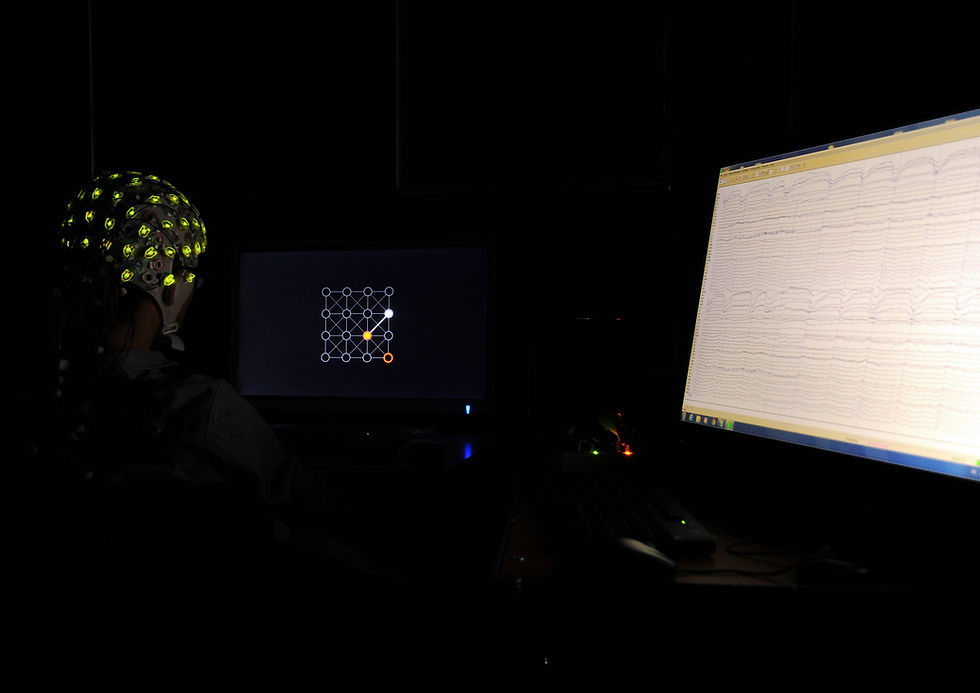Genetic Correlations Between Bisexual Behavior and Risk-Taking: A Recent Study
- Maahik Trivedi

- Jan 12, 2024
- 3 min read

Researches have recently discovered a gene uniquely correlated with bisexual behavior and risk-taking (Warren Umoh, Unsplash)
Understanding the nature of human sexuality and its associated behaviors has been an ongoing goal in science. Recently, a study published in Science Advances found genetic correlations between bisexuality and risk-taking behaviors.
Understanding the Intersection of Bisexual Behavior and Risk-Taking
Bisexuality refers to sexual attraction, romantic feelings, and/or sexual behavior towards both males and females. Risk-taking behaviors include activities that can involve potential hazards or adverse outcomes. The study revealed that the genes associated with bisexual behavior are different than those linked to exclusive same-sex behavior, and individuals with a history of bisexual behavior may have a natural tendency for risk-taking.
Importance of Studying Genetic Links
Investigating genetic correlations can help unravel the biological underpinnings of behavioral traits like bisexuality and risk-taking. The Science Advances study utilized a large database of 450,000 individuals in the UK, providing insight into the genetic component of sexual behavior. Understanding these genetic factors can help provide support for individuals as well as fight misconceptions.
Literature Review: Previous Research on Bisexual Behavior and Risk-Taking
Bisexual individuals are at increased risk for mental health, substance use, and sexual health problems compared to heterosexual and gay/lesbian individuals. According to the “Bisexuality, minority stress, and health” study published on PubMed, lifetime rates of mood/anxiety disorders were higher among bisexual-identified women (58.7 percent for mood disorders, 57.8 percent for anxiety disorders) compared to lesbians (44.4 percent for mood disorders, 40.8 percent for anxiety disorders) and heterosexual women (30.5 percent for mood disorders, 31.3 percent for anxiety disorders). Lifetime rates of mood/anxiety disorders were also higher among bisexual-identified men (36.9 percent for mood disorders, 38.7 percent for anxiety disorders) compared to heterosexual men (19.8 percent for mood disorders, 18.6 percent for anxiety disorders), but rates were similar to gay men (42.3 percent for mood disorders, 41.2 percent for anxiety disorders). Despite rates being similar for self-identified gay and bisexual men, rates were higher for behaviorally bisexual men compared to behaviorally gay men (46.5 percent versus 26.8 percent for mood disorders, 38.9 percent versus 25.0 percent for anxiety disorders).
According to the same study, bisexual men are also at higher risk for sexually transmitted infections (STIs), while bisexual women are at increased risk for STIs compared to lesbians and heterosexual women. These results show the presence of risk factors associated with bisexuality.
Research through a 2014 Human Rights Campaign and CDC survey has shown higher rates of risk-taking behaviors in bisexual youths compared to heterosexual or gay/lesbian youths. Bisexual students engage in many different risky behaviors, including tobacco and alcohol use, attempted suicide, sexual behaviors, and weight management. Therefore, bisexuality seems to be linked to an increased propensity for engaging in risky behaviors.
Methodology of Recent Study - A Brief Summary
A recent study published on January 3, 2024, “Genetic variants underlying human bisexual behavior are reproductively advantageous,” investigates the genetic component of bisexual behavior and its connection to risk-taking and reproductive success.
The study analyzed data from over 450,000 individuals of European descent who participated in the U.K. Biobank project. Genetic variations associated with bisexual behavior were identified for the first time using this dataset. These genetic variations were found to be distinct from those associated with exclusive same-sex behavior, indicating a different genetic basis for different sexual orientations. Heterosexual men carrying the genetic markers associated with bisexual behavior were more likely to take risks and had a higher reproductive success, as they tended to father more children. The study suggests that the genetic variations associated with bisexual behavior and risk-taking have provided reproductive advantages, contributing to their persistence.
This research aimed to shed light on the genetic foundations of bisexuality, illustrating how certain genetic variants associated with bisexual behavior and risk-taking are the same variants that can potentially enhance reproductive success in heterosexual men.
Challenges in Genetic Research on Bisexual Behavior
A challenge in this study is the limited sample diversity. The dataset was based on 450,000 individuals of European descent, and the concluded findings are now being generalized to other populations. Therefore, there is a need for more diverse participants to capture more accurate data.
Another challenge has been the ethical concerns behind research on bisexual behavior. There are fears of medicalizing sexual orientation, potentially reinforcing the stigmatization of LGBTQ+ individuals. Research on the genetic aspects of bisexual behavior has often caused intense debates and can potentially lead to the formation of stereotypes.
Sources & Further Reading
https://www.ncbi.nlm.nih.gov/pmc/articles/PMC5603307/
https://www.prideinpractice.org/articles/bisexual-youth-risk-behavior/
https://www.japantimes.co.jp/news/2024/01/04/world/science-health/scientists-genetic-bisexuality/
https://www.science.org/doi/10.1126/sciadv.adj6958
https://www.sciencealert.com/straight-men-with-bisexual-genes-have-more-kids-study-finds
https://www.ncbi.nlm.nih.gov/pmc/articles/PMC9132750/
https://pubmed.ncbi.nlm.nih.gov/9271716/



Comments